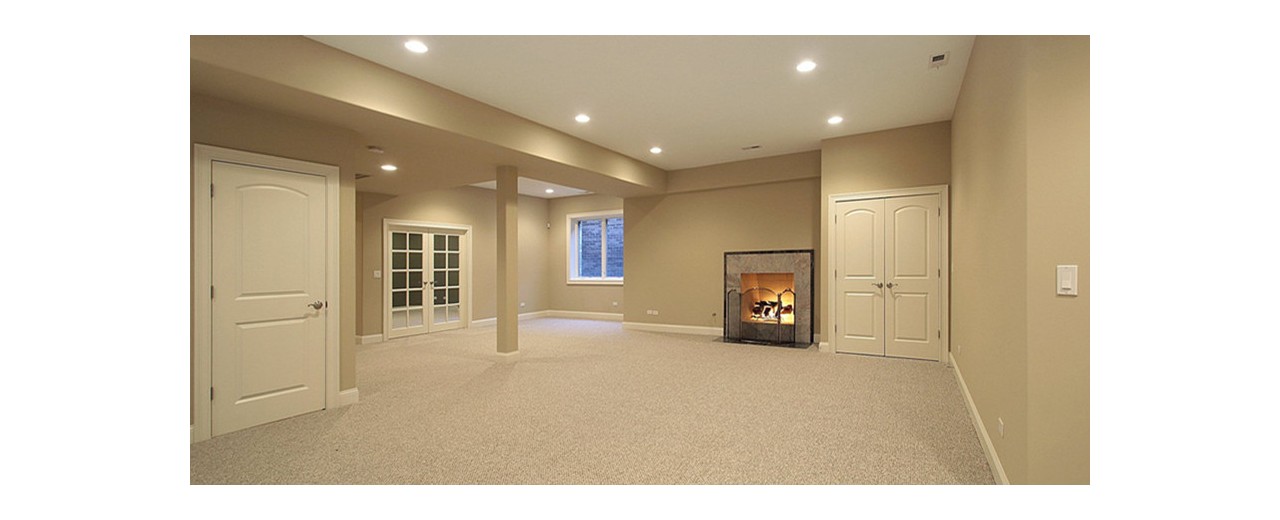A Complete Guide to Basement Lighting


Lighting is a design element that often becomes an afterthought when building or renovating a house. Nevertheless, developing a sound lighting plan improves other design elements, increases the value of your home and contributes to your safety and enjoyment of your home.
Basements have less natural light than other parts of the house. Adding more artificial light afterwards is difficult and expensive. Proper planning of your basement lighting is therefore crucial.
Basement Lighting Requirements
As in other areas of the home, a basement's lighting must first comply with regulations. If the regulations are met, you are free to adapt the lighting to your own needs.
The standard distinguishes between uninhabited and habitable cellars. An uninhabited basement is usually a basement that is empty or used for storage or for vital services and utilities. A habitable space is a space used for living, sleeping, dining, or cooking: essentially the definition of a basement that has been finished or developed into a living room, home theater, bedroom, or apartment.
When unoccupied or used for storage
According to the electrical code, you must provide at least one light per room. This light can be controlled with a switch on the light or with a wall switch. The wall switch should be near the entrance to the room.
The code can be met with a ceiling lamp and a wall switch. If it's a small utility room, you can make the same configuration or even have a ceiling light that turns on and off with a pull chain.
When used as living space
If you plan to finish your basement, the standard requires:
- At least one lighting socket with wall switch in every habitable room, kitchen and bathroom.
- The wall switch should be located on a wall near an entrance to the room.
- In rooms other than kitchens and bathrooms, one or more wall sockets are allowed instead of lighting sockets. In this setup, a floor lamp is often plugged into this type of socket.
- Motion sensors are only allowed in addition to wall switches and where a switch would normally be located. In addition, the sensors must have a manual switch-off function.
- A light outlet is required in corridors and stairwells.
- Any entrance to the basement should have an outside light.
Types of basement lighting
Recessed lighting
If ever there was a perfect combination of lighting and space, this is it: recessed lighting and basements. Recessed spots work so well in basements because they are tucked out of the way. Almost the entire unit is in the ceiling; only the decorative frame is visible.
- To make recessed spots less conspicuous, you can place them on dimmer switches.
- Create recessed lighting zones to keep the lights on only in the areas you want, not the entire basement. Installing dimmers and zones not only saves energy and money, but also gives you more flexibility.
- Recessed lighting can be unfocused and diffused. To emphasize certain areas, you can install gimbal recessed spotlights. The light heads have a range of motion that allows you to illuminate specific areas in a targeted manner.
Ceiling lighting
Ceiling lights placed in the center of the ceiling and controlled by a wall switch are standard for many rooms. Not only do they meet the standard, but they provide basic lighting for any type of room. Builders usually install switch-controlled ceiling lights as the standard lighting in many rooms.
Sconce lighting
Sconce lamps are switch-operated fixtures that mount to the wall and usually point upwards when used for general wall lighting. Sconce lamps can also be pointed downwards and used as reading lamps. In that case, the switch can be located on the lamp itself or in the wall.
standing lamps
Floor lamps are individual lamps that rest on the floor and can be moved as needed.
Floor lamps are the pinnacle of flexibility. You can plug the floor lamp into a socket operated by a switch and turn the light on or off at the door. Or you can move the floor lamp wherever there is an outlet and use the switch on the lamp.
Tray lighting
Tray lighting is a type of basement lighting system that uses a narrow tray built into the ceiling as a base for concealed lighting. Tray lighting is good for creating an atmosphere in a room, and it is especially beneficial when you usually want the room to be dark, such as when watching a show or relaxing.
Building the box and making it flow seamlessly into your basement is often the work of a skilled carpenter. But adding the lighting to the bin is easy. Rope lamps or LED band lamps can be mounted in the trays. The lighting can be controlled with an app on your phone and can take on any color you want.
hand lamps
Handlamps are individual, movable lighting units that are switch-operated and mounted on a solid metal or wire rail. Rail lights have some flexibility as the light heads can be easily moved along the rails, without the need for tools.
Hand lamps, however, can be a visual barrier, especially for lower basement ceilings less than 1 meter high. If this is the case, place the rail on the side of the room, close to a wall. Hand lamps can be used to illuminate paintings, fireplaces, bars, countertops, and any other type of localized area that requires task lighting.
Faux windows with natural light
Faux windows have a finish, casing and polycarbonate panes that look like glass. They even have sunlight streaming in – or what looks like sunlight – and can be curtained.
They are mounted directly on the wall and connected to standard sockets. With these fake windows for natural light, no one will think they are real windows. But they do add an element of fun for a relatively low price.
Basement Lighting Design Principle
Define usage
Most rooms in the house have clearly defined uses – kitchen, bathroom, living room, bedroom, office. But what about your basement? Function determines design
For example, a basement that is mainly used as a media room or theater room will have different lighting than a basement that serves as an apartment for a family member. Does the basement have a laundry room? Then you need strong general lighting along with task lighting on the counter or folding table.
Decide on the brightness
When building or renovating a basement, opt for more lighting than less. Sconces, ceiling lights, recessed spotlights, and more are hardwired behind walls and ceilings. Adding more lighting is much easier during the construction or remodeling phase, when the walls and ceilings are open, than later when the walls are closed.
Build in flexibility
Permanently installed lighting can be made flexible with a few adjustments:
- Set lighting zones.
- Add dimmer switches.
- Install switch-operated outlets.
- Use wi-fi lighting and smart bulbs to extend lighting to areas not served by electrical wiring.
Coordinate with the room decor
Basement size, color and configuration play a major role in basement lighting. Basements that are divided into different rooms require different types of lighting. Light-colored basement walls reflect more, so they need less lighting.
Create or increase the natural lighting of the basement
Since the upstairs and surrounding soil invade the basement, bringing in natural light requires additional planning. While it is more difficult to bring natural light into the basement than artificial light, the gain is worth it. Natural light is free and it gives this space a warm, relaxed feel.
solar tubes
Solar tubes, light tubes or solar tubes look like giant, dim recessed lights in the ceiling of your basement. In reality, they are large diameter reflective tubes that extend from the roofline to the basement ceiling. Sunlight is captured on the roof and sent down to the basement for low-intensity natural lighting
Solar tubes are not true skylights, so direct sunlight rarely reaches the basement. But the light is really natural light, and using solar tubes can save money on artificial light during the day.
Keep in mind that the solar tube has to go through the upper floor. But by sacrificing some upstairs closet space, you can run the pipe down invisibly.
Windows in the basement
Windows are always the best way to bring natural light into a room. In basements, the windows are usually smaller and higher than on upper floors. Still, a little window section in sun-poor basements goes a long way.
If the basement is deep, the window opening in the foundation wall should be cut out. This requires consultation with a contractor or structural engineer to avoid construction errors that could affect the upper floors.
Window openings in shallower basements can be cut into the jamb system and supported by appropriately sized window jambs. This is a significantly simpler and more straightforward project than cutting concrete foundation walls or concrete block walls.
Create a daylight or walk-out cellar
A daylight or walk-out basement has one or more full walls at ground level. Daylight basements are usually in houses located on sloping land. The bevel of the house creates an opening.
Making a daylight basement in a house on mostly flat terrain requires excavating a portion of the earth next to a wall and shoring the earth with a retaining wall. A water management plan is a necessary component to prevent water from building up in the excavated area and flooding the basement.
While building a daylight basement is a costly, elaborate project, it can improve the intensity and quality of light in the basement and increase the overall value of your home.

1 comment(s)